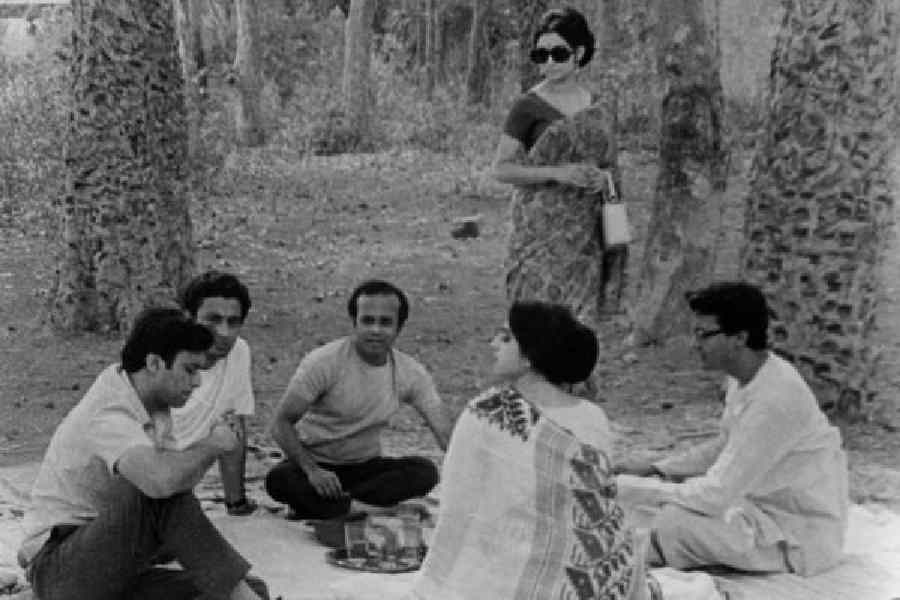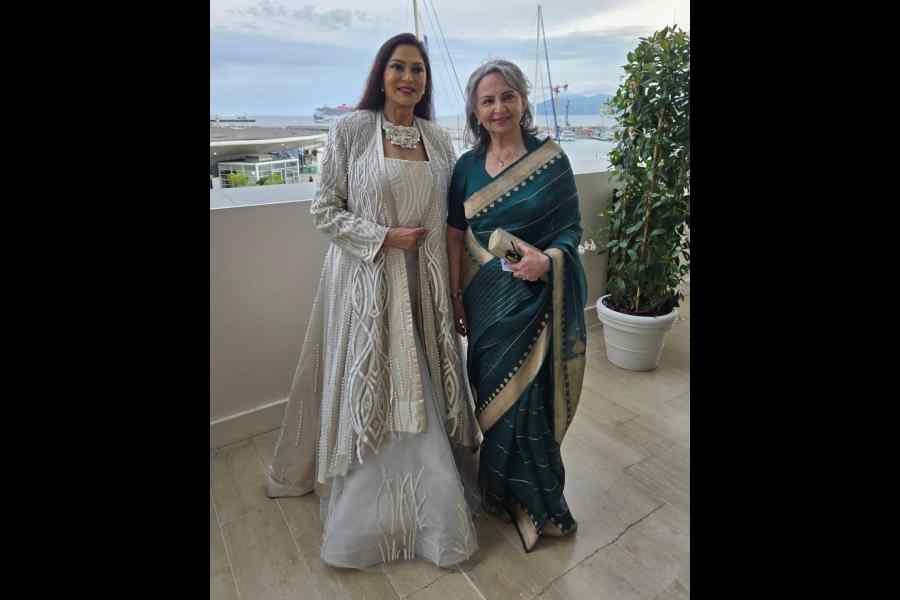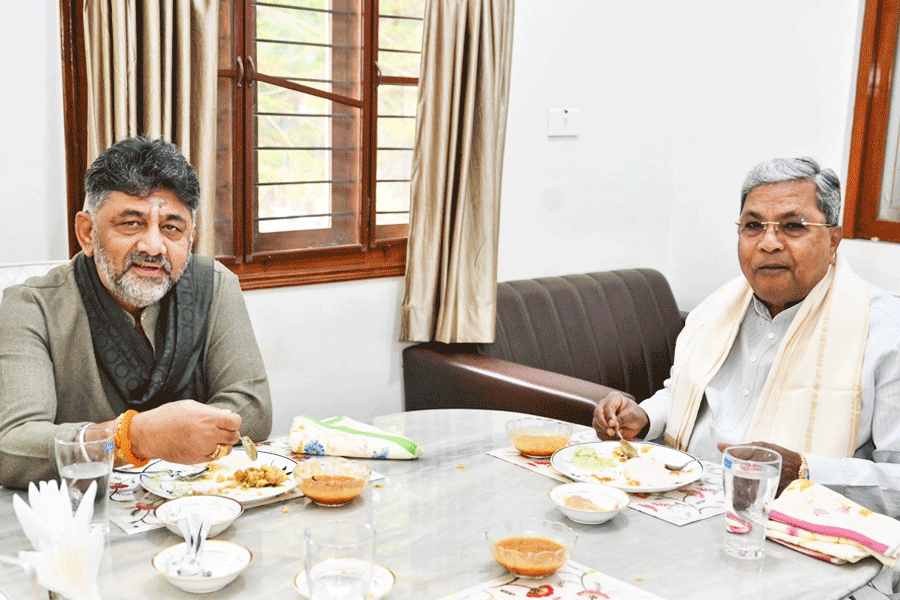Amid a flurry of influencers competing for the spotlight and brands vying for attention on the red carpet, the 78th Cannes Film Festival took a moment on Monday evening to honour Indian cinema — that of Satyajit Ray none the less, varnished on the watch of celebrated global filmmakers Wes Anderson and Martin Scorsese.
The 4K restored version of Aranyer Din Ratri (Days and Nights in the Forest), which is counted as one of Ray’s most significant works in his post-Apu trilogy phase and a film of extraordinary subtlety, refinement and depth, was screened in the Cannes Classics section of the prestigious film festival.
Present in the audience were Sharmila Tagore and Simi Garewal, the leading ladies of the 1970 film which had Soumitra Chattopadhyay leading a strong ensemble cast that also included Subhendu Chatterjee, Robi Ghosh, Samit Bhanja, Pahari Sanyal and Aparna Sen.
The film, often hailed for its sublime structure and treatment, had four young city-bred men, brimming with confidence and on a quest for hedonism, travelling to the forests of Bihar to escape the daily grind of urban life, where each of them goes through a series of experiences that change them in one way or the other.
On Monday, accompanied by Anderson — a longtime admirer of Ray’s cinema who has played a key role in the six-year-long restoration process of the film — Sharmila and Garewal walked down the Cannes red carpet into a housefull theatre, its members as eager to see them on stage as they were to watch the film on screen. Sharmila was dressed in an elegant bottle-green sari and Garewal, regal in her trademark white.
Also present at the screening were producer Purnima Dutta; Margaret Bodde, the executive director of The Film Foundation, a non-profit organisation founded by Scorsese for the restoration of classics; and Shivendra Singh Dungarpur, the head of the Film Heritage Foundation, who has over the last few decades worked tirelessly towards the restoration and preservation of Indian classics.

A scene from the film Aranyer Din Ratri
Before the screening, Anderson took the stage to talk about his deep admiration for Ray, including his maiden brush with Aranyer Din Ratri, recalling how he “first saw it 25 years ago in a very strangely translated, blurry, scratchy, pirated DVD from a little Bollywood shop in New Jersey”.
The man behind award-winning films like Moonrise Kingdom and The Grand Budapest Hotel, whose latest The Phoenician Scheme also premiered at Cannes this year, went on to describe Ray to the packed house as “wildly versatile, adventurous and endlessly prolific”, focusing specifically on Aranyer Din Ratri.
Had Ray made the film in 1970s America, “he would have cast John Cassavetes, Peter Falk and Ben Gazzara”, Anderson weighed in.
The filmmaker also paid an ode to the famous “memory game sequence” in the film, saying, much to the delight of the Cannes crowd, that he had “openly stolen” it for one of his own films.
Sharmila recalled shooting for the film 56 years ago, paying special tribute to her mentor, Ray. “I feel it is only the other day that we shot this film in the middle of a forest in India in the month of May. We didn’t have any amenities, and we all stayed in makeshift houses. All of us became excellent friends, and we celebrated Manikda’s (Ray) birthday there. Simi brought him a cake from Calcutta, and we had a fun evening,” said Sharmila, 80, who served as a member of the Cannes jury in 2009.
Garewal, who was cast against type as a tribal woman in the film, made her Cannes debut on Monday, taking on from Sharmila in recalling what it was like shooting Aranyer Din Ratri in a language and setting she wasn’t familiar with.
“There was no electricity, no running water, no television, no phones, no communication with the outside world. But it didn’t matter at all because we felt a heightened euphoria... for we had the good fortune of working with one of the greatest film directors in the world, Mr Satyajit Ray. To choose me to act in his film was the biggest honour of my life,” said Garewal, adding: “That ushered a friendship with Mr Ray that continued right till the end. I have a whole pile of his letters, which are so precious to me now.”
Dungarpur, who has worked hard on restoring the film along with his collaborators both in India and abroad, commenced the restoration process of Aranyer Din Ratri during the pandemic. He was, as expected, a happy man after the screening.
“What a proud moment it was to walk the red carpet with Sharmilaji, Simiji and Wes Anderson for the world premiere of the restored Aranyer Din Ratri at the Cannes Film Festival. I wish Sandip Ray (who had aided the restoration process) could have been with us. It was the perfect culmination of the long journey to restore the film that began years ago.
“It was an incredible screening with a packed house that included film luminaries like multiple Oscar-winning filmmaker Alejandro Gonzalez Inarritu and renowned cinematographer Darius Khondji. Wes Anderson spoke so movingly of his deep admiration for Satyajit Ray and the work on the restoration. And it was wonderful to be acknowledged by Margaret Bodde, executive director of The Film Foundation, along with Martin Scorsese and Wes Anderson, for our work as preservers of our film heritage,” Dungarpur said after the screening.










